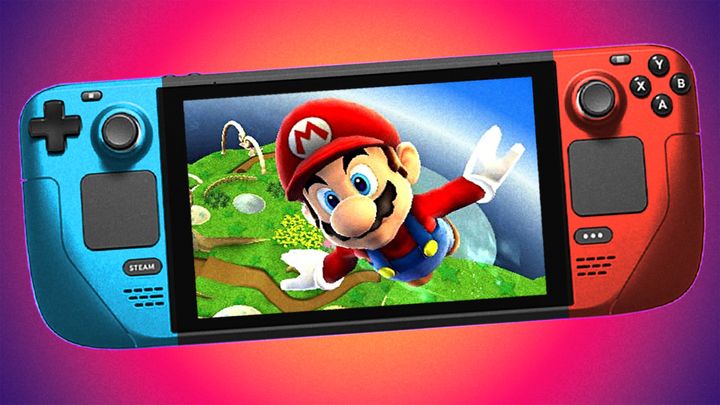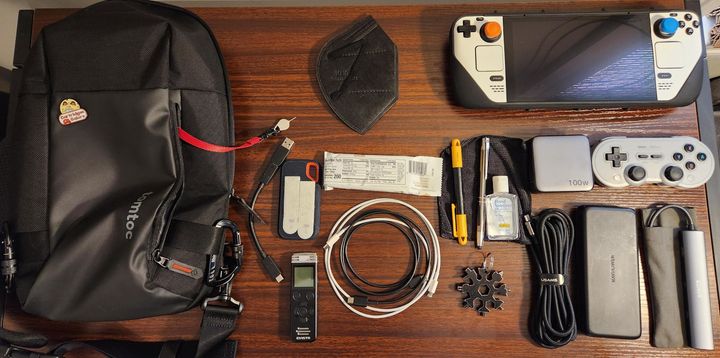Don't let your eyes deceive you: Windows compatibility is an illusion
We've all heard someone say it: "I use Windows because it can play all my games." But how accurate is that statement? Let's dig into it!

Windows: the exemplar of compatibility. Every game is 100% compatible on a Windows handheld and there’s never anything that can go wrong. Except that’s definitely not true.
The often-touted compatibility of Windows is an illusion brought about by an industry resting on complacency, disposability, and low expectations. So today, we’re going to be talking about this. Why Windows provides a fundamentally worse experience and how game developers are dropping the ball in this space.
One of the most common complaints about the Steam Deck is that it, quote, “can’t play all my games.” And that is true, it definitely can’t play all your games. Many attribute the Deck’s incompatibilities to its custom, gaming-focused operating system, SteamOS. To some extent, that is also true. SteamOS is based on Linux and some Windows games simply aren’t compatible. But is this a red herring? I’d argue it is.
In fact, if you were to put Windows 11 on the Steam Deck, you’ll find that while you’d have access to a few more contemporary online shooters that require anti-cheat and DRM… you actually lose access to many others.
See, there’s this inaccurate and pernicious idea that Windows is the paragon of compatibility. As if just because you’re running Windows 11 on your machine, you can somehow play ALL your games.
But Windows 11–and heck, even the obsolete Windows 10–have a spurious record with backwards compatibility. If you want to play an old game… the big box release of SimCity 3000, for example (which I find myself doing with alarming frequency)–you’ll need to jump through numerous hoops to make this game even remotely playable. Now, I can hear you scoff “but I can just get the GOG release and it works just fine.”
Cool. But should you have to re-buy games to continue playing them? I’d say “no.”
So how about Star Wars Jedi Knight: Mysteries of the Sith? Yeah. It’s unplayable on any modern Windows system I’ve tried. And there are countless other classics that simply won’t work on today’s machines.
While you could maintain a collection of period-accurate hardware to feed your retro gaming desires, for most folks, that’s just out of the question.
“But who wants to play these old games, anyway?” Well, I’ve had my Steam account for over a decade. Others have had theirs for over 20 years. You can’t say that Windows can play all your games and then conveniently exclude “old” games that you don’t play.
And it’s not just 90’s games that have problems on modern systems. There are titles from the mid 2000’s that have hardware abstraction problems. Many people report issues running games like Command & Conquer Generals, Max Payne 2, and many others on portrait-native displays. So pretty much every PC handheld including the Deck. Yet on SteamOS, all of these run just fine.
And, heck, there are games from just last year that simply won’t function properly on Alder Lake CPUs due to DRM.
And then there’s Windows itself. God forbid you want to use perfectly good hardware that’s 10+ years old on Windows, lest you suffer daily blue screens of death. This USB 3.0 hub that I bought 6 years ago? Yep. Despite it being perfectly capable hardware in the year 2023, after the 20H2 build of Windows, this thing is fodder for the wastebin. Yet, it works perfectly fine on Linux. But Windows has a fit. With this device plugged in, Windows will crash to a blue screen of death at least three times a week.
Now let me ask you this: have you ever wondered why old games keep getting re-releases? I mean, why does BioShock have the “Remastered Edition” on Steam? And why is Rockstar only selling the “Definitive Edition” de-makes of classic GTA games?
It’s simple: because the original versions of these games have compatibility issues with modern Windows and these devs don’t want to support these old games, so they make a new version instead. And de-list the old one.
So why do games (and hardware) become incompatible, anyway?
Well, Windows is a proprietary operating system that ships with .dll files. These are essentially libraries of code that other applications rely on to get common things done. Stuff like reading and writing to your filesystem, communicating with the Windows kernel, generating pseudorandom numbers, accessing the network, DirectX, and many more tasks. These DLL files along with the Windows kernel provide what I’ll call the “Windows Environment.” A software layer that sits between your x86-based hardware and the applications you want to use.
Games become incompatible as new versions of Windows get released and the “Windows Environment” changes. Applications may be built for Windows 98, or Windows XP or Windows 7’s Environment. And back then, those were pretty stable targets, infrequently receiving updates with breaking changes. But as high speed broadband Internet has taken hold, Microsoft has moved towards a AAA publisher’s mentality. The “ship it now, fix it later” approach. So the new releases of Windows remove old or outdated code, substitutes unfashionable systems for shiny, new ones, updates and improves other things, and as Microsoft’s priorities in the Windows space change, older software just breaks.
So things change. That’s why an entry-level machine you bought back in 2015 can’t seem to keep up with the latest build of Windows 10.
Tweaking
But that’s okay, right? Can’t you just do a little research online and find some community-made guide, or unofficial patch, or fan-made engine rebuild? Yes. You absolutely can. But then you’re getting into dangerous territory.
See, if you’re the kind of person who has the know-how to wrestle with your games and suplex them into a playable state then it doesn’t matter what platform you’re on or what operating system you’re running. The only difference, at that point, is your experience.
If you’re only familiar with “The Windows Way” of having to trick your OS into behaving in a way that isn’t Power-user approved, then being a Linux newbie can be an alienating experience.
Not being able to get a “simple task” done quickly enough? I get it. It’s frustrating. And, honestly, that’s really the crux of the issue.
Because, while the compatibility issues between Linux and Windows are certainly different… Windows is not the paragon it’s been made out to be. Since the release of Windows Vista, backwards compatibility has really suffered with software written for older versions of Windows.
So while SteamOS might be missing the usual spate of modern online shooters, Windows is missing so many of the classics, especially on a handheld. Unless you’re willing to fork over your hard-earned cash for inferior remakes or do the legwork yourself.
Proton, on the other hand, is quite mature and capable of running most software written for Windows, especially older games. And compatibility with Proton is actually up to the developers of a game, rather than Valve. Sure, it’s not 100% accurate and it doesn’t provide every possible DLL that the Windows Environment does. But it’s pretty close. And the older versions of Windows are well represented here.
In fact, unless a developer takes proactive measures to make a game incompatible with Proton, things usually just work. And if they don’t, Valve comes along for new releases and issues a fix pretty quickly.
Truth be told, Proton has better compatibility with older software than Windows does at this point. And as D8VK continues to mature, we’ll see the expansive catalog of late 90’s and early 2000’s software find even greater compatibility.
The fact of the matter is: there’s an illusion, a pernicious lie out there. Windows gets all this praise for its “compatibility.” But that’s for no other reason than it’s the default. You buy a new PC and chances are high that it shipped with Redmond’s OS. And it’s been that way for over 30 years.
So of course, if a manufacturer ships a Windows PC, they’re going to select parts that are compatible with Windows. And of course, if a vendor wants their parts to be bought by manufacturers, they’ll write drivers for Windows.
But if you take a look at the Steam Deck, even today, Windows support is pretty mid. Valve has half-hearted released a few hardware drivers for Windows, but it took almost a year for the audio driver to actually support the use of the built-in speakers.
And what we see with Windows on Steam Deck is the OS without the makeup. We see the plain Jane OS where the manufacturer hasn’t triaged Windows into a stable, usable state.
The same holds true for game developers. They target Windows, not because it’s the best, but because it’s the default. You can’t give Windows the credit for being “the most compatible,” any more than you can credit the moon for its brightness.
With the Steam Deck, the mirage was broken, the magic trick was explained. Windows is not the default because it’s earned its place at the top. Nope, in fact, it’s been living rent-free in the minds of PC gamers despite the fact that it’s an unemployed couch surfer who’s overstayed their welcome. And it’s time we kicked the bum out the house.
…the house is your PC in this metaphor
But I’d like to know what you think. Has Windows overstayed its welcome in the desktop space? Leave me a comment and let me know!




Comments ()